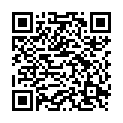|
|
|
| Module code: MAA-2.x.9 |
|
1V+1U (2 hours per week) |
|
3 |
| Semester: 1 |
| Mandatory course: yes |
Language of instruction:
German |
Assessment:
Student research project
[updated 30.07.2021]
|
MAA-2.x.9 Architecture, Master, ASPO 01.10.2012
, semester 1, mandatory course
|
30 class hours (= 22.5 clock hours) over a 15-week period.
The total student study time is 90 hours (equivalent to 3 ECTS credits).
There are therefore 67.5 hours available for class preparation and follow-up work and exam preparation.
|
Recommended prerequisites (modules):
None.
|
Recommended as prerequisite for:
|
Module coordinator:
Prof. Dipl.-Ing. Eve Hartnack |
Lecturer:
Prof. Dipl.-Ing. Eve Hartnack
Prof. M Arch Dipl.-Ing. Stefanie Eberding
[updated 29.10.2013]
|
Learning outcomes:
Based on a basic understanding of objects and space, students will be able to develop unconventional solutions for existing and future demographic changes in communities in the Saarland.
After successfully completing this module, students will have acquired analytical, typological and constructive knowledge and be able to translate this into creative design concepts.
They will be able to identify complex tasks in the field of structural social change and communicate holistic solutions.
[updated 30.07.2021]
|
Module content:
Study and analysis of the current resident structure and demographically changing social structure, vacancies under aspects of design, tradition and building structure, infrastructural and social offers such as accessibility of facilities for daily supplies and everyday communication structures, as well as the existence of features that create identity.
The objective is to increase the attractiveness of the urban centers and to stabilize social relations. Inter-generational living and the design of living environments will be addressed and examined with regard to the stimulation of self-competence and initiative of the village community.
[updated 30.07.2021]
|
Teaching methods/Media:
Lecture with multimedia visualization technologies. Guided tutorial.
[updated 30.07.2021]
|
Recommended or required reading:
References to literature and research options are topic-related and will be announced at the beginning of the module.
[updated 30.07.2021]
|


